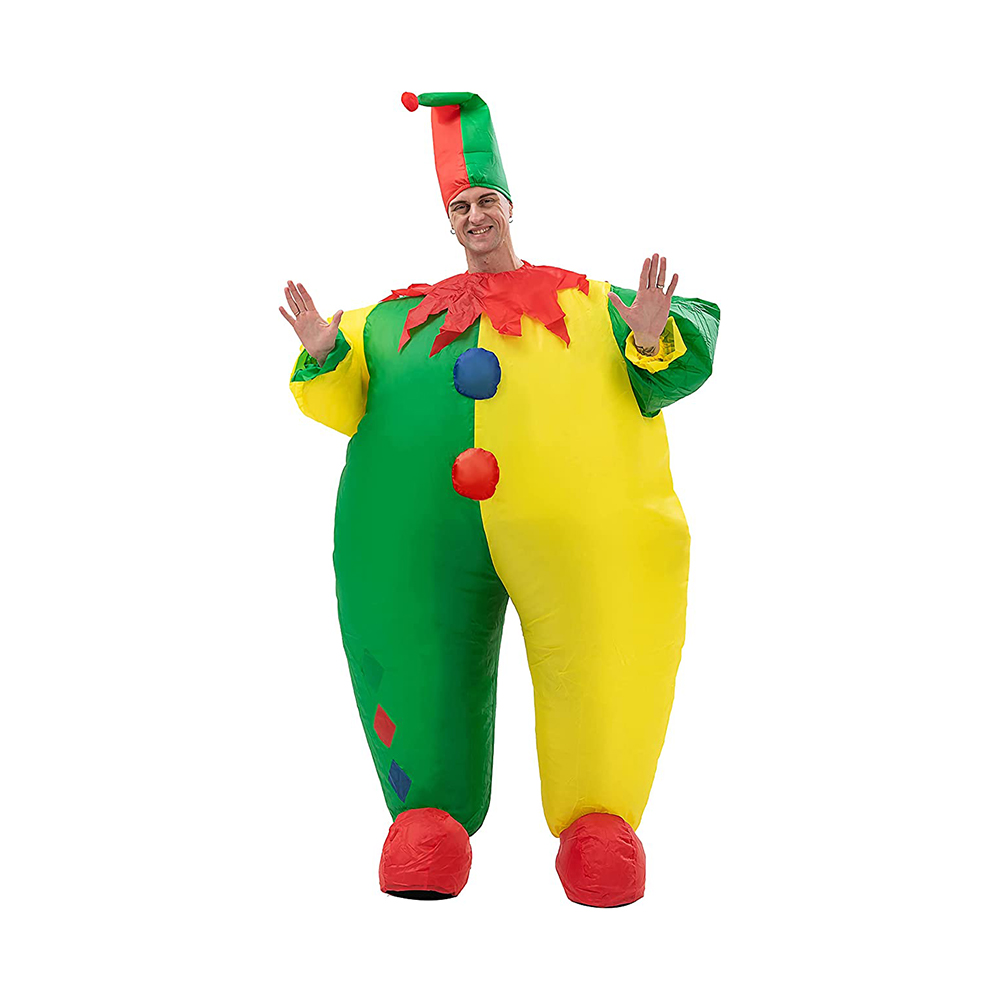Performers wearing inflatable costume clowns for extended periods need to carefully consider visibility and ventilation to ensure their safety, comfort, and overall performance quality. Here are some specific considerations:
Visibility:
1.Clear Sightlines: Ensuring clear sightlines is crucial for performers to navigate their surroundings and interact with the audience effectively. Designing the head portion of the inflatable costume clown with strategically placed eyeholes or using transparent materials like mesh or plastic allows performers to maintain direct eye contact with the audience while preserving the aesthetic appeal of the costume.
2.Peripheral Vision: Performers need adequate peripheral vision to be aware of their surroundings, especially in crowded or busy environments. Designing the costume with carefully positioned mesh panels or openings on the sides enables performers to have a broader field of vision. This consideration is vital for safety, enabling performers to avoid obstacles and interact seamlessly with the audience.
3.Lighting Considerations: In some performance settings, especially those with low lighting, integrating internal LED lighting or reflective elements within the costume can enhance visibility. Illuminated features not only improve the performer's visibility but also create a visually appealing spectacle for the audience, adding an extra dimension to the performance.
4.Adjustable Features: Customizability is key to accommodating performers of varying heights and body proportions. Designing the costume with adjustable features, such as movable eyeholes or adaptable headgear, ensures that performers can align their eyes properly with the costume's openings. This adjustability promotes comfort and optimal visibility for performers of different sizes.
Ventilation:
1.Breathability: Selecting breathable materials for the inflatable costume is essential to facilitate air circulation. Incorporating breathable fabrics and mesh panels in less conspicuous areas, such as under the arms or along the torso, allows for the exchange of air. This design choice helps prevent overheating and ensures performers remain comfortable throughout their extended performances.
2.Cooling Systems: Integrating small, quiet fans or cooling pads within the costume can significantly enhance ventilation. These built-in cooling systems provide a continuous flow of fresh air, helping regulate the internal temperature and reducing the risk of overheating. Properly designed ventilation channels distribute the airflow evenly, ensuring performers remain cool and composed during prolonged use.
3.Regular Breaks: Even with well-ventilated costumes, performers should schedule regular breaks outside of the costume to rest and rehydrate. Adequate rest periods allow performers to recover, maintain their energy levels, and deliver high-quality performances consistently. Planning breaks into the performance schedule is essential for the performer's well-being.
4.Fittings and Size: Ensuring that the costume fits the performer properly is fundamental to ventilation. Ill-fitting costumes can restrict airflow and hinder ventilation, leading to discomfort and reduced performance quality. Performers should be measured accurately, and costumes should be tailored to their specific body dimensions, allowing for ample room inside the costume for air circulation.
5.Weather Considerations: Weather conditions, especially heat and humidity, can impact the performer's comfort and safety. In hot weather, additional ventilation features or lightweight, breathable materials can be incorporated into the costume design. Performers should be aware of weather forecasts and make necessary adjustments to their costumes to account for varying environmental conditions.
Inflatable costume clown blow up funny joker costumes(adult size)
 Email: [email protected]
Email: [email protected] Tel: +86-188-5709-9268
Tel: +86-188-5709-9268